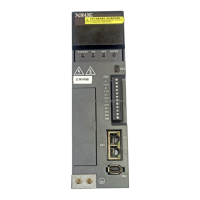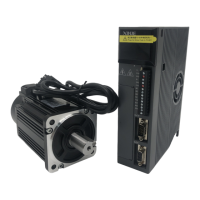6.5.3 Gain parameters for adjustment
The gain parameters that need to be adjusted:
P1-00 Speed Loop Gain
P1-01 Integral Time Constant of Speed Loop
P1-02 position loop gain
P2-35 Torque Instruction Filtering Time Constant
P2-49 Model Loop Gain
◼ Speed loop gain
Because the response of the speed loop is low, it will become the delay factor of the outer position loop,
so overshoot or vibration of the speed command will occur. Therefore, in the range of no vibration of
mechanical system, the larger the setting value, the more stable the servo system and the better the
responsiveness.
◼ Integral time constant of speed loop
In order to respond to small inputs, the speed loop contains integral elements. Because this integral
factor is a delay factor for servo system, when the time constant is too large, it will overshoot or
prolong the positioning time, which will make the response worse.
The relationship between the gain of the speed loop and the integral time constant of the speed loop is
approximately as follows:
P1-00 × P1-01 = 636620
integral time
constant of speed
loop
◼ Position loop gain
When the model loop is invalid (P2-47.0=0), the responsiveness of the position loop of the servo unit is
determined by the gain of the position loop. The higher the position loop gain is, the higher the
responsiveness is and the shorter the positioning time is. Generally speaking, the gain of position loop
cannot be increased beyond the natural vibration number of mechanical system. Therefore, in order to
set the position loop gain to a larger value, it is necessary to improve the rigidity of the machine and
increase the number of inherent vibration of the machine.
tudonghoatoancau.com

